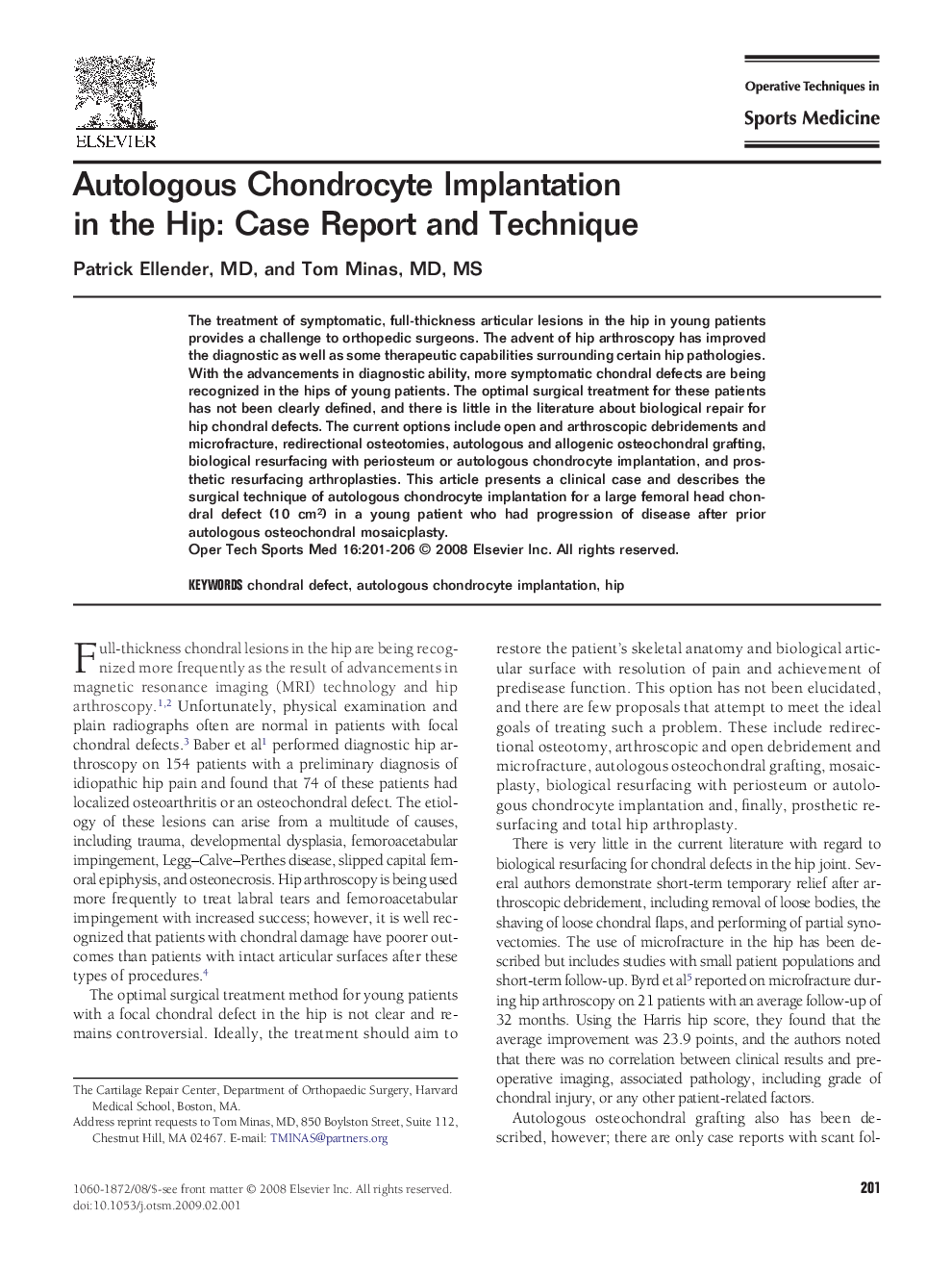| Article ID | Journal | Published Year | Pages | File Type |
|---|---|---|---|---|
| 4079761 | Operative Techniques in Sports Medicine | 2008 | 6 Pages |
The treatment of symptomatic, full-thickness articular lesions in the hip in young patients provides a challenge to orthopedic surgeons. The advent of hip arthroscopy has improved the diagnostic as well as some therapeutic capabilities surrounding certain hip pathologies. With the advancements in diagnostic ability, more symptomatic chondral defects are being recognized in the hips of young patients. The optimal surgical treatment for these patients has not been clearly defined, and there is little in the literature about biological repair for hip chondral defects. The current options include open and arthroscopic debridements and microfracture, redirectional osteotomies, autologous and allogenic osteochondral grafting, biological resurfacing with periosteum or autologous chondrocyte implantation, and prosthetic resurfacing arthroplasties. This article presents a clinical case and describes the surgical technique of autologous chondrocyte implantation for a large femoral head chondral defect (10 cm2) in a young patient who had progression of disease after prior autologous osteochondral mosaicplasty.
